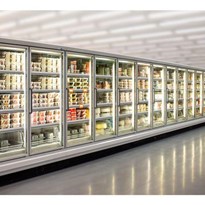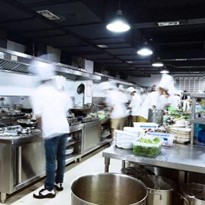Chest freezers can be used by family or food businesses. Some reasons for buying a standalone freezers range from the need for storing bulk food to needing a huge frozen storage capacity for business purposes among other reasons. It is an added benefit that a standalone freezer also helps in saving time and money. However, not all freezers are the same so you should be very careful while buying a new freezer.
For starters, there are two common types, chest freezers, and upright freezers. The first thing to do is decide what one is best suited to your needs. Both kinds of freezers have a list of pros and cons that can help in deciding the kind of freezer they want.
People often decide between buying an upright freezer and chest freezer by taking into consideration the factors like cost, energy efficiency, storage, organization, defrosting ability, space requirements and the performance of the freezer during power outage situations.
In a nutshell, chest freezers are cost-efficient and consume less energy. On the other hand, upright freezers can be more compact.
Use this exclusive guide to buy the most suitable chest freezer for you. The most vital factors to keep in mind while buying a chest freezer include size, cost, and energy efficiency etc. Read on people, and you can thank us later!
Here are the top 5 things you need to know when it comes to choosing your brand new chest freezer:
Capacity
Capacity is measured in liters, 18 liters is one bag of shopping. We sell chest freezers that fit anything from 5 to 22 shopping bags full of food.
Chest freezers are perfect for storing those bulky food items that just won’t fit in your main freezer thanks to their large amount of usable space. Perfect if you’re cooking big meals for your friends and family, they tend to be used as secondary freezers. We have a wide range of capacities available, starting with 100 litre models that have room for 5 bags of shopping. All the way up to huge 400 litre models that can hold a whopping 22 bags of groceries.
Outside storage
In most homes, chest freezers are stored in a garage or an outbuilding. Our product pages tell you if your chosen model can be safely stored in unheated rooms.
Save floor space and food storage space with a chest freezer. Certain models are able to work in colder environments, so you can safely store them in your garage or any other outbuilding. If you know where you want your new freezer to live, keep in mind how hot and cold that space can get before you decide. From a cool -15°c, all the way up to 43°c, most of our chest freezers work under a varying temperature range. Have a quick look at the specifications on our product pages and check the temperatures that your chosen model can work under.
Safety features
For peace of mind, chest freezers come with a variety of safety features including high-temperature warnings and door locks.
Most chest freezers have a temperature warning light. This lets you know when the temperature inside is either too hot or too cold, helping to keep your food fresher for longer and reduce waste. For ultimate safety, you can keep your little ones away from the frozen goodies with a model that comes with a child lock on the door.
Counterbalanced lid
Because the lid is counterbalanced, you’ll be able to safely and simply prop it open while you find what you’re looking for.
A counterbalanced lid is really useful as it stays open without the need for you to hold it up. With the door safely propped, you're free to use both hands to find that missing bag of frozen peas or that tub of ice cream for dessert. It’s also really handy when you’re unloading your big weekly shop into the freezer.
There are some features one should look for while buying a chest freezer. These are as follows:
- Freezer Locks: It limits the access to the freezer. It comes in handy when there are young kids at home or the freezer is in a business environment and it needs to be secure
- Warning Light: It helps in monitoring the freezers operation at all times. There is an alarm light when there is no power or there is an issue that affects the functioning of the freezer.
- Insulation: The thicker the insulation the better the performance of the freezer. Thicker insulation stops the cold escaping and means the compressor does not need to run as much – this saves your money on electrical running costs.
- Adjustable Thermostat: This allows you to change the temperature to get the perfect results
- Replaceable Lid Gasket: Chest freezers can keep performing for many years however one part that can become less effective over time is the lid gasket. By being able to replace the lid gasket easily you can get the maximum life out of your investment.
Choosing the right size of chest freezer
It is a widely known fact that freezers come in four different sizes. These are compact, large, medium and small. When one wants to buy a chest freezer, there are a lot of things one needs to take into consideration. Thus, some things to remember while buying the chest freezer are as follows:
- You should take the capacity of the chest freezer into account before finalizing on the chest freezer of your choice. The size is directly proportional to the family size or the size of the food business and the eating habits of the family.
- The next thing to consider is the quantity of food one needs on a regular basis. The quantity of food one needs also affects the size of the chest freezer one needs.
- The food preference also plays a vital role in buying the right sized chest freezer. If people prefer their foods to be frozen, then a large-sized chest freezer is needed. Otherwise, a medium sized chest freezer is an ideal pick.
- One should take into consideration the cooking preferences of the family. In case, grocery shopping is done only once a week, then having a large chest freezer will be helpful in handling the load.
- Another key thing to look at is the size of the freezer and if it will fit through the doorways into the room you want it to be located - this will stop failed deliveries.
Energy efficiency of chest freezers
No matter the amount of money a chest freezer costs, at the end of the day, it will consume electricity to keep the food fresh. Thus, taking into account the energy requirements of a chest freezer model is vital. Since food is stacked in layers in chest styled freezers, the varied food items cool themselves by the process of insulation. Thus, the freezer doesn’t need as much as electricity as an upright freezer. This, in turn, saves a lot of electricity costs.
In case, people are confused about spending on a chest freezer that is expensive but has better energy efficiency and a chest freezer that is budget friendly and consumes a lot of electricity, then the choice is very simple. People should always opt for the former as it has long-term benefits. People should also take into account the freezer’s performance in power outage situations.
Thus, in conclusion, getting a chest freezer will save the family or the said food business a lot of time and money. The pointers above will help people in buying a chest freezer that is as effective and efficient as per their needs and requirements.
Other features
Chest freezers have a limited number of features – there's not a lot to differentiate the brands. They generally feature at least one basket for the convenient storage of smaller items, but you may need more depending on your requirements.
Adjustable temperature controls are available on selected models, and if you are worried about security – particularly if you intend to bulk-buy high quality frozen goods – you may want to choose a model with a lock.
A lightweight lid is also an advantage, and an interior light will make it easier to find what you're looking for.
Always be aware of the warranty that is provided with each unit. Should any problems arise with a full warranty you are fully covered and will incur no further expense however with a parts only system you will need to cover the cost of engineer call-outs and labour. Warranties often range between 12 and 24 months although some may be more.



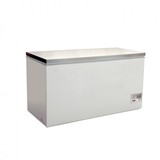
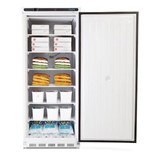
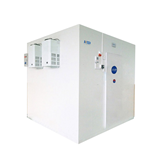
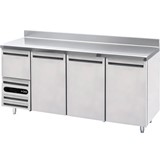



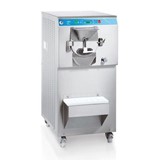












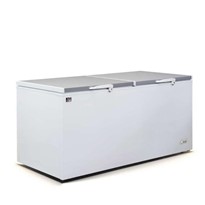





-205x205.jpg)





-205x205.jpg)
